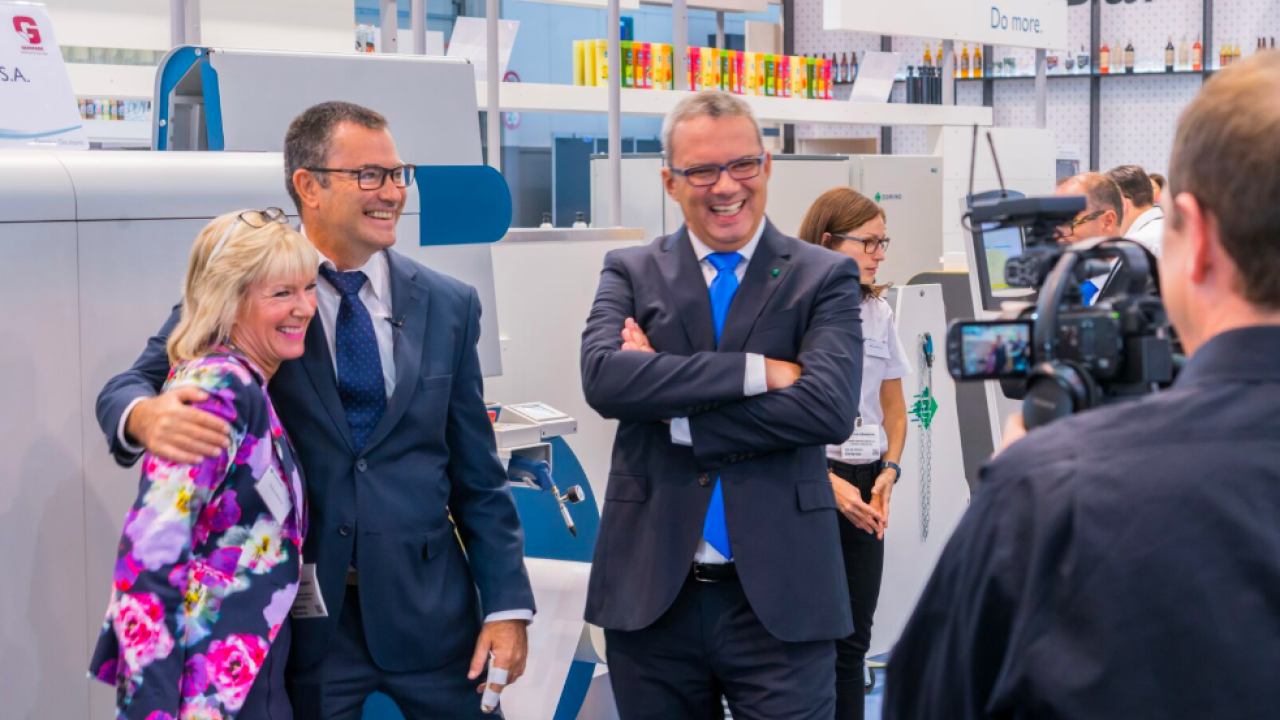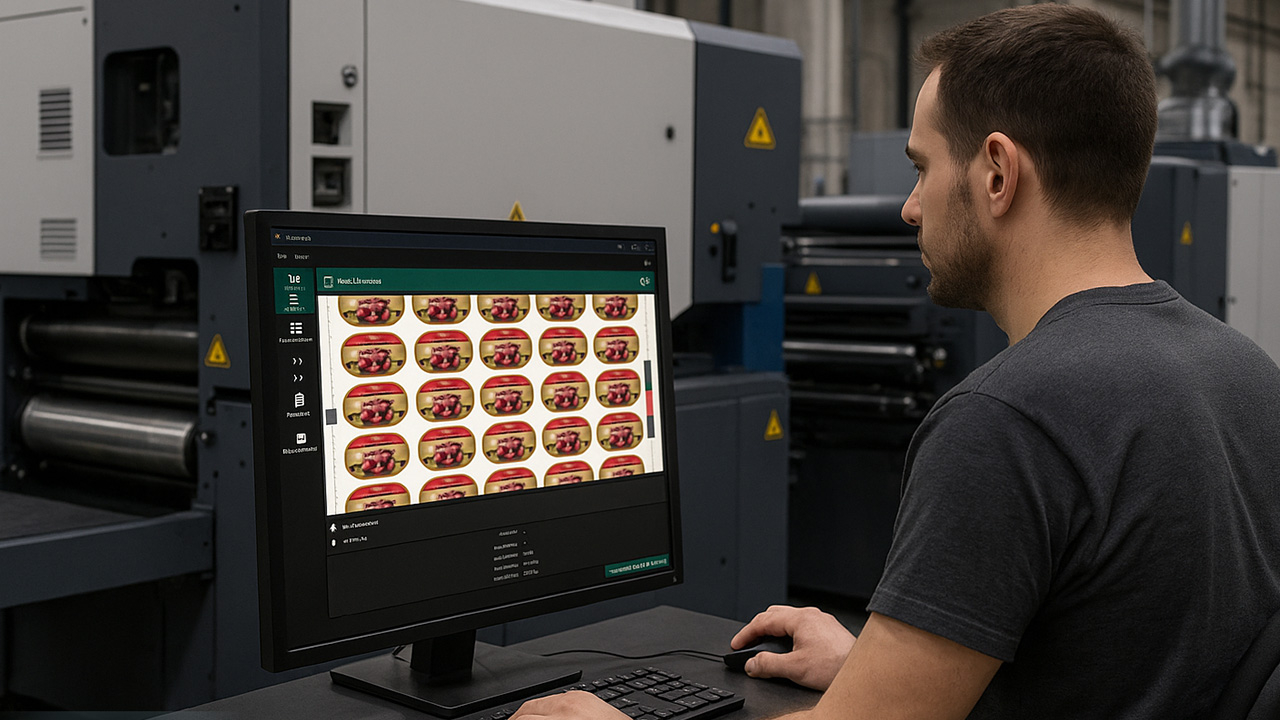Cosmetics advantage for Germark with Domino inkjet

Barcelona-based converter Germark finalized a deal for a Domino N610i inkjet press at the show. It was a landmark order – this was the first company in Spain to install a digital press, a Xeikon machine back in 2000, and a user of HP Indigo digital presses since 2006.
The press was installed following the show, and 18 months on, L&L visited Germark to see what impact the Domino inkjet press was having on the business.
The primary motivation for buying the Domino N610i, according to Germark president Iban Cid, was the press’ high opacity digital white ink. ‘We produce a lot of work for the cosmetics markets, using analog silkscreen. But pre-press for screen is expensive. A brand such as Prada might not worry about the cost, but for lower cost labels the inkjet press becomes a great option. Domino’s high-opacity white is essentially two whites and gives an ink thickness simulating analog screen. It is a great idea that is unique to them.’
Cid says that around 30 percent of clients who were buying screen-printed labels have been moved to inkjet-printed labels. These include a number of cosmetics clients, as well as beverage brands such as fruit juices and smoothies. According to Cid, five years ago Germark was using 4,000 silkscreens a year. Last year, it used 1,000. ‘There’s a big saving on pre-press time and cost.’
Alongside the advantages brought by the high-opacity white ink, Cid cites ease of use and the N610i’s speed as other important factors behind the purchase: without printing white, the press can reach 70m/min; with white, 50m/min.
‘Ink coverage is key,’ explains Cid. ‘If the design does not require heavy ink coverage – big blocks of ink for example – then there is really no limit to the run length we can produce on the Domino press. If heavy ink coverage is required, then sometimes the speed needs to be reduced from 70m/min to 50m/min, in case lines begin to appear in the print. In this case, we will produce the job on an HP Indigo press. But jobs without heavy ink coverage can be handled very effectively on the Domino.’
To finish labels printed on the Domino N610i, Germark installed a Grafotronic DCL2 finishing line, which features UV flexo varnish, lamination, semi-rotary/rotary die-cutting, laser die-cutting and turret rewinding. ‘We use these to add value to digitally printed labels. Laser die-cutting allows us to make the kind of cutting impossible to do with mechanical die-cutting. Examples of a through-hole die-cut in the middle of a label without using any tool is remarkable.’
Change
The introduction of inkjet printing is not the only significant change at Germark in recent times. The company was recently certified to BRC HH Audit One – the higher level required by major global cosmetics end users. This was prompted by the company winning a contract, after five years of innovative product development, discussion and negotiation, from a multinational end user in the female and baby care sector. Cid predicts the company will be producing 224 million units a year for the job.
‘There are only a handful of BRC HH Audit One certified label converters in Europe, and Germark is the first in Spain,’ reports Cid. ‘We achieved certification in record time, just six months. It required a 300,000 euro investment to overhaul our factory and processes.’ During L&L’s visit – where special shoes, coats and hair nets must be worn – the factory was in pristine condition.
The investment was worth it. The new contract has added 2 million euros of turnover to Germark’s label division – a big percentage jump from its previous 6 million euros.
Germark’s systems division – dedicated to label applicators and other equipment – also has a turnover of 6 million euros, a figure which has doubled from 3 million euros in the last 12 months. This leap has been the result of Germark manufacturing a new system which complies with new EU pharma regulations which state that every box of medicine needs a unique serialization code and tamper-evident technology.
In a further change, the company has set up a dedicated RFID label division this year. ‘We have been manufacturing RFID labels for more than 10 years,’ says Cid. ‘But we are now seeing serious growth, so decided to give it its own dedicated division.’
Germark added Esko’s Automation Engine to its operations last year, and is planning to install a dedicated management information system soon. The next press likely to be bought, according to Cid, will be a hybrid.
Stay up to date
Subscribe to the free Label News newsletter and receive the latest content every week. We'll never share your email address.


